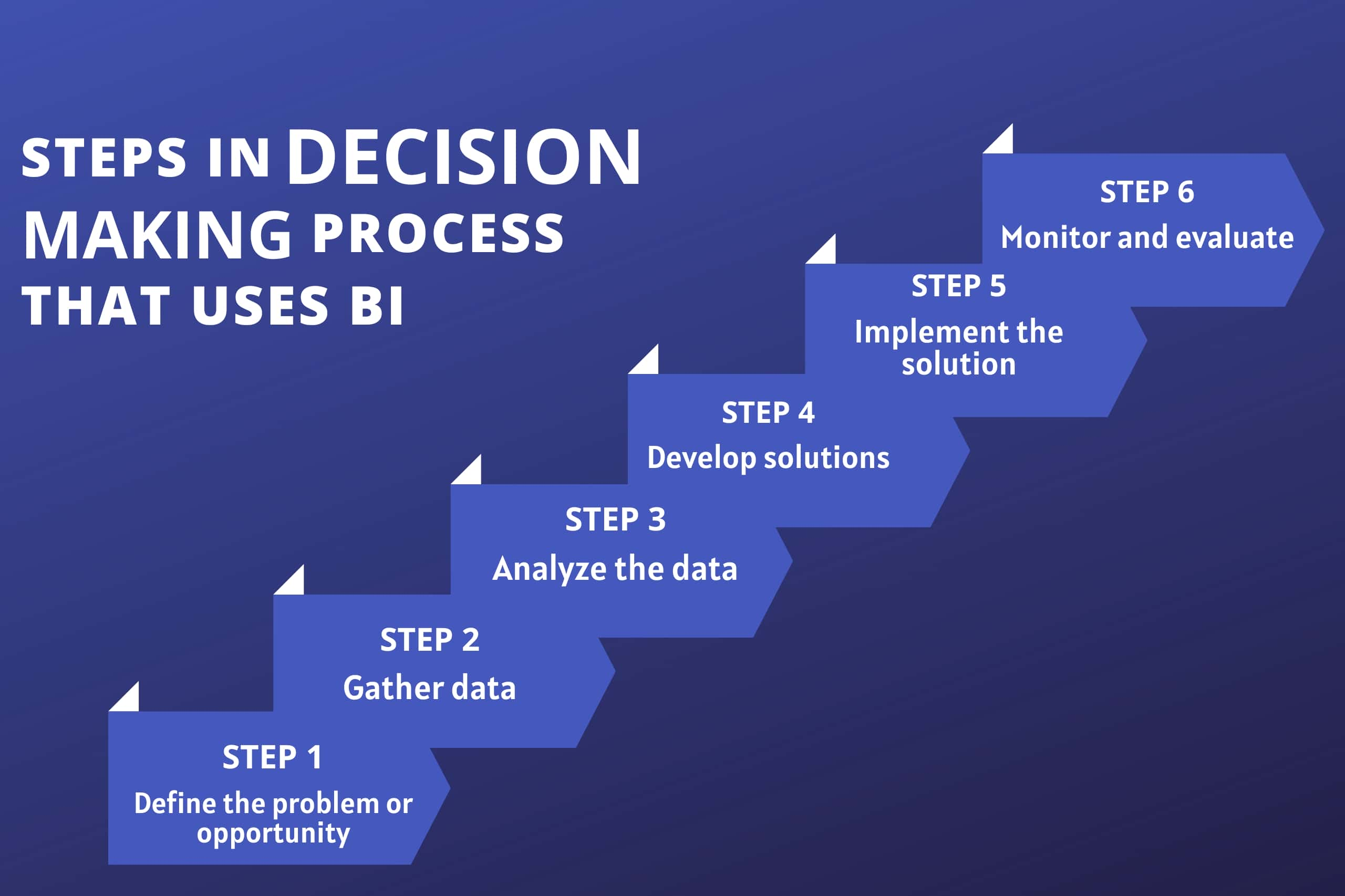In the fast-paced world, businesses must be on their toes to make their brand carve a niche. Hence, the emphasis on newer technologies like Business Intelligence is rising. The Business Intelligence decision-making is underpinning the business operations. As the penetration of technology continues to rise, so is the demand for professionals who can excellently leverage this technology is also shooting up. The focus of this blog is to take you through some of the key aspects of BI and the importance of Business Intelligence in decision-making.
Key Takeaways
- BI has an array of tools and techniques that assist in accurate decision-making.
- Most successful organisations emphasize using BI to make strategic decisions that give them profitable returns.
- BI-based decision-making helps companies stay competitive and ahead of the curve.
What is Business Intelligence?
To put it in simple words, BI or Business Intelligence is the process of collecting the data, analyzing and interpreting it that can eventually help the companies strategies their plan of action for the future. It encompasses several tools and technologies that work on this data and converts it into meaningful insights that make it an asset for organizations.
BI provides businesses with a holistic view of their operations, performance, and market trends, enabling them to make informed decisions based on data-driven insights. Owing to its application, the importance of Business Intelligence in decision-making is rising.
Types of Decisions in Business Intelligence
Before leveraging BI assistance to the company’s operations, knowing the types of Business Intelligence decisions is significant. The three primary categories are :
|
Strategic |
Operational |
Tactical |
| These are long-term decisions that may be complex. Usually, senior managers work on this type of decision-making. | It takes into account the day-to-day decisions. These are simple and involves junior managers | These fall in the mid-management level and involve the implementation of strategic decisions. |
Example of Business Intelligence
This real-world example will highlight how New York Shipping Express (NYSHEX) implemented BI that helped in reducing IT dependency.
Challenge: Initially, the company focuses on manually extracting the data from its application and via various cloud apps. This data is then moved to Excel. Now this process involves too much work, and manual data extraction can be flawed.
Solution: Instead, NYSHEX invested in BI, and then they centralized its data into one system. Now this system is accessible to all authorized personnel, including the ones with no coding experience.
Results: Because of BI implementation in 2019, the company was able to multiply its shipping volume between Asia and U.S.
Read Blog: Business Intelligence vs Business Analytics
Why is Business Intelligence Important for Decision Making?
The data-driven world is pushing companies to unfold new ways of using this information and converting it into a form that businesses can use to formulate strategies that can help them target their potential customers. Usually, the companies work on different types of data like sales and revenue, customer information, market trends, operational metrics and others. This data is not beneficial until it is churned and filtered. This is where the role of BI comes in. Here is how Business Intelligence drives decision-making.
Improved Data Analysis
One of the key areas of BI implementation is the analysis of data. The BI tools enable data collection, analysis, and interpretation. Irrespective of the source of data, the BI tools work on it and provide a comprehensive view. Eventually, helping businesses identify patterns, trends, and correlations that may not be otherwise feasible manually. Thus aiding decision-making.
Enhanced Decision Making
The power of technology lies in the fact that it works faster and with accuracy. The BI tools are designed for faster collection and interpretation of data, thus aiding in the decision-making process. Moreover, BI tools also work on real-time data and historical data. Thus allowing businesses to track their performance and reduce risk.
Competitive Advantage
Companies adopt several measures in the competitive business landscape that keep them ahead of the curve. Quick action, faster turnaround time, analysis of consumer behaviour and quick decision-making have become the watchword. The BI tools leverage advanced features that allow businesses to analyze market trends, customer preferences, and competitor activities, thereby helping them stay ahead of the competition. Moreover, with BI, companies can also assess newer opportunities, optimize their operations, and thus help them make strategies.
Risk Mitigation
Every business faces certain risks like operational, financial, regulatory, and others. BI can help in identifying the potential threat areas via data analysis and predictive modelling, enabling them to take proactive measures to mitigate risks. This is executed by optimizing supply chain operations, managing cash flow, and ensuring compliance with regulatory requirements.
Strategic Planning
Another key application of BI is in strategic planning. A company that is able to harness the data and use it to analyze the trend, preferences and patterns in the business can get more useful outcomes. Thus implementation of BI tools helps in better brand positioning.
Steps in Decision-Making Process that Uses BI
The decision-making process that uses Business Intelligence (BI) typically involves the following steps:
- Define the problem or opportunity
Identifying the problem area is the first step, where clearly highlighting the problem to address must be stated.
- Gather data
The next step is to collect the relevant data from different sources like customer data and feedback. Market trends or competitor information.
- Analyze the data
It is also significant to analyze the data, which involves different methods like data visualization, data mining, or statistical analysis, depending on the nature of the data.
- Develop solutions
The company can draw potential solutions to the problem based on the insight. The solution further undergoes modelling and analysis.
- Implement the solution
After deriving the solution companies, the implementation part may involve changing the sales strategies or business process or implementing new technology.
- Monitor and evaluate
Finally, the solution’s effectiveness can be monitored and evaluated over time. This includes ongoing data analysis and feedback. Thus helping in providing the process.
Wrapping it up !!!
Implementing technologies like Business Intelligence and Artificial Intelligence has become the need of the hour. Companies that are striving to survive in the market irrespective of their business size need to adopt and embrace these technologies that can eventually help them gain a competitive edge.











